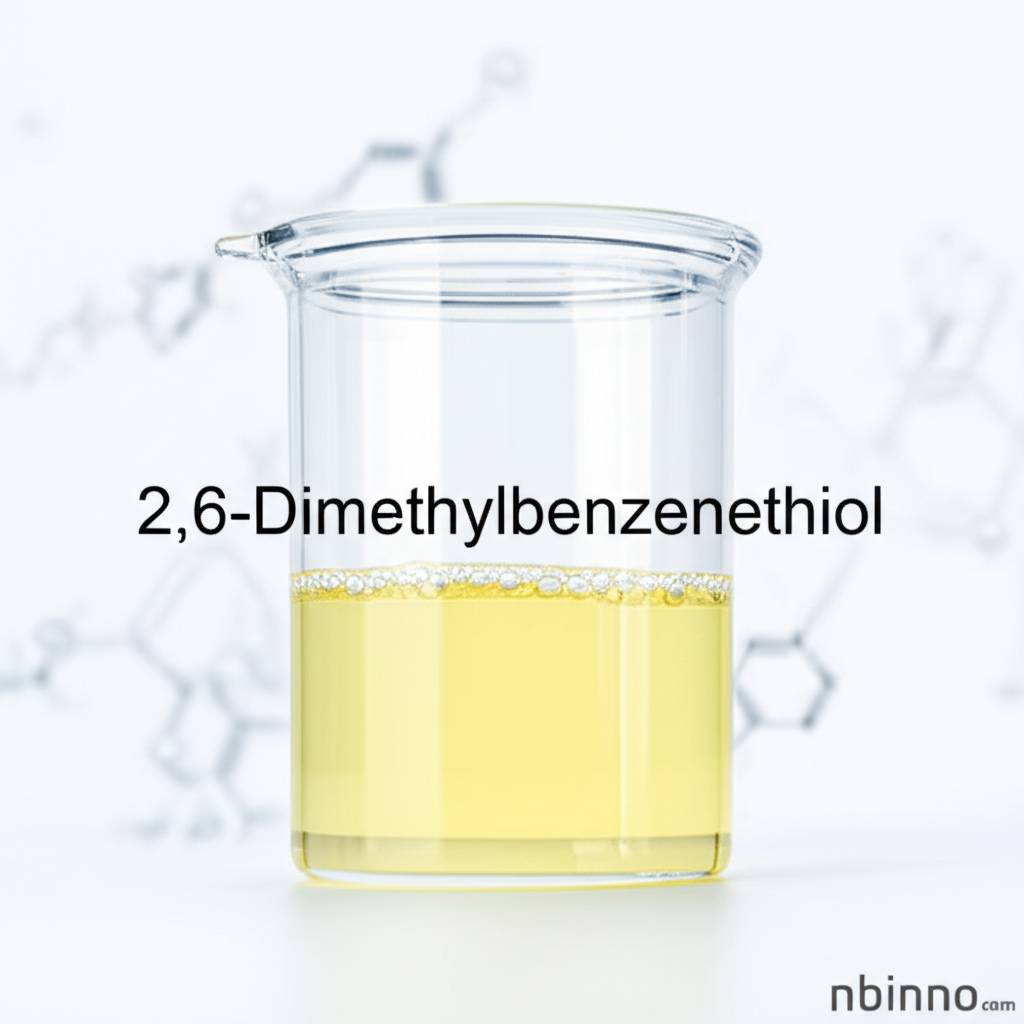Unlock the Rich Aromas: Understanding 2,6-Dimethylbenzenethiol for Flavor and Fragrance Applications
Discover the essential properties and diverse applications of this key flavor ingredient in creating captivating sensory experiences.
Get a Quote & SampleProduct Core Value

2,6-Dimethylbenzenethiol
2,6-Dimethylbenzenethiol (CAS 118-72-9) is a vital organic intermediate celebrated for its distinctive aroma profile. It is characterized by meaty, roasted, and phenolic notes, making it an indispensable component in the creation of complex and appealing flavors for a wide range of food products. Its high purity and stability ensure consistent performance in various applications.
- Leveraging the unique meaty, roasted, and phenolic aroma of 2,6-dimethylbenzenethiol contributes significantly to authentic flavor profiles.
- The high purity of 99% for this organic intermediate ensures reliable and consistent results in flavor formulation.
- Understanding the properties of 2,6-dimethylthiophenol is key for flavor compound development.
- Explore the uses of 2,6-dimethylbenzenethiol in food to enhance product appeal.
Key Advantages Provided
Versatile Flavor Contribution
The complex aroma profile of 2,6-dimethylbenzenethiol allows it to add depth and character to various food applications, from savory dishes to baked goods, enhancing the overall taste experience.
High Quality and Purity
With a purity of 99%, this ingredient adheres to strict quality standards, making it a dependable choice for flavor formulation where precision is paramount.
Crucial for Organic Synthesis
As an important organic intermediate, 2,6-dimethylbenzenethiol serves as a building block in the synthesis of various sulfur-containing compounds, crucial for creating novel flavor and fragrance molecules.
Key Applications
Flavor Creation
Widely used to impart meaty, roasted, and savory notes, contributing to authentic flavor profiles in processed foods, snacks, and culinary applications.
Fragrance Industry
Its unique scent characteristics can also be leveraged in certain fragrance compositions, adding complexity and nuance to perfumes and personal care products.
Organic Synthesis
Serves as a critical intermediate in the synthesis of more complex organic molecules, including those used in pharmaceuticals and material science, showcasing its utility beyond direct flavor use.
Cosmetics
Its aromatic properties can also find application in cosmetic formulations where specific scent profiles are desired.
Related Technical Articles & Resources
Why Choose Us?
Leverage our expertise and state-of-the-art infrastructure to accelerate your journey from discovery to commercial success.
Global Experience
With 20 years of R&D, manufacturing, and sales experience, we proudly serve clients across 60 countries and regions worldwide.
Advanced Facilities
Our in-house R&D laboratory, pilot platform, and large-scale production workshop are equipped to meet the audit requirements of global customers.
Seamless Scalability
We facilitate a perfect transition from small-scale lab requirements (grams) to full commercialization (hundreds of tons).
